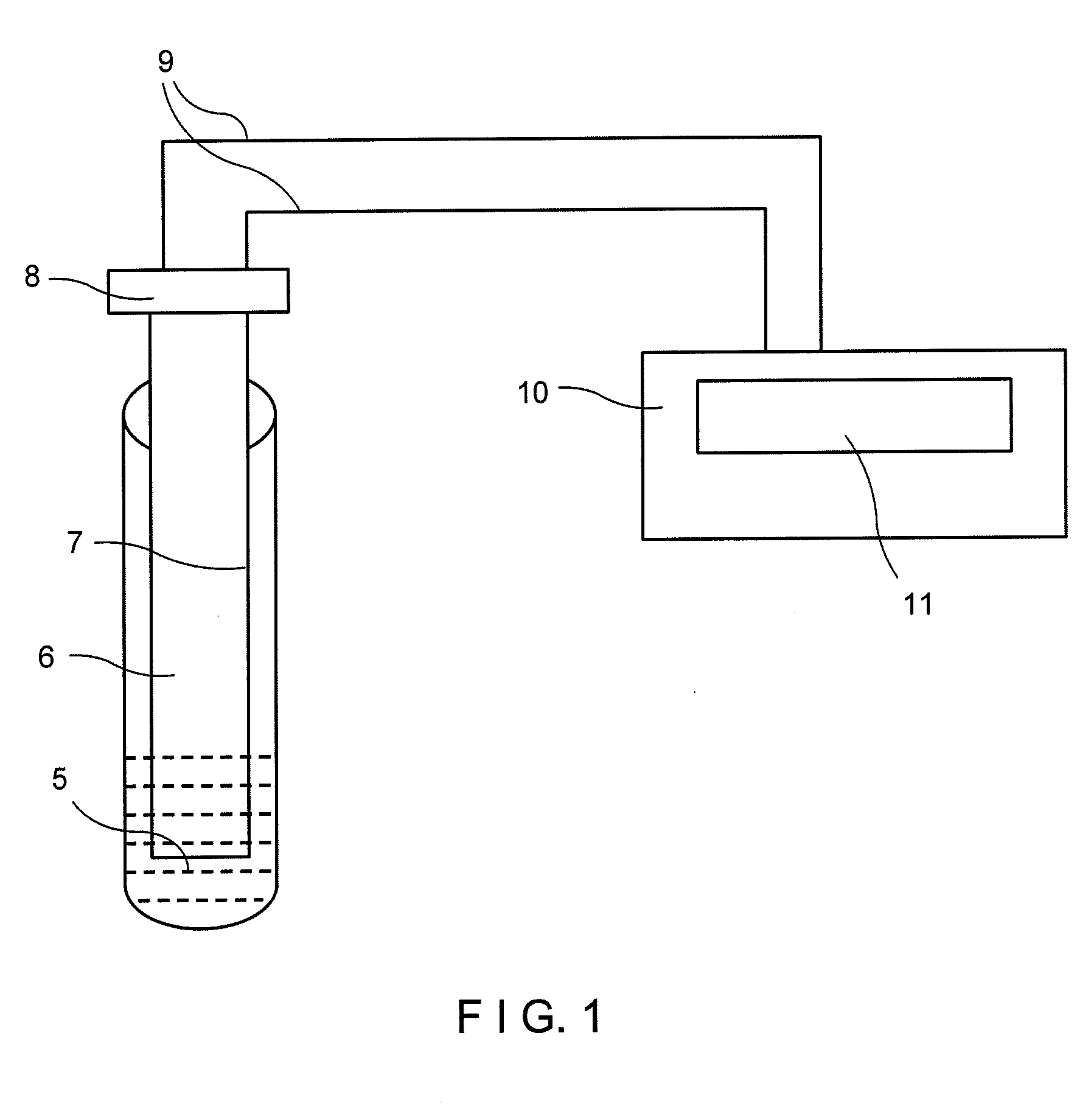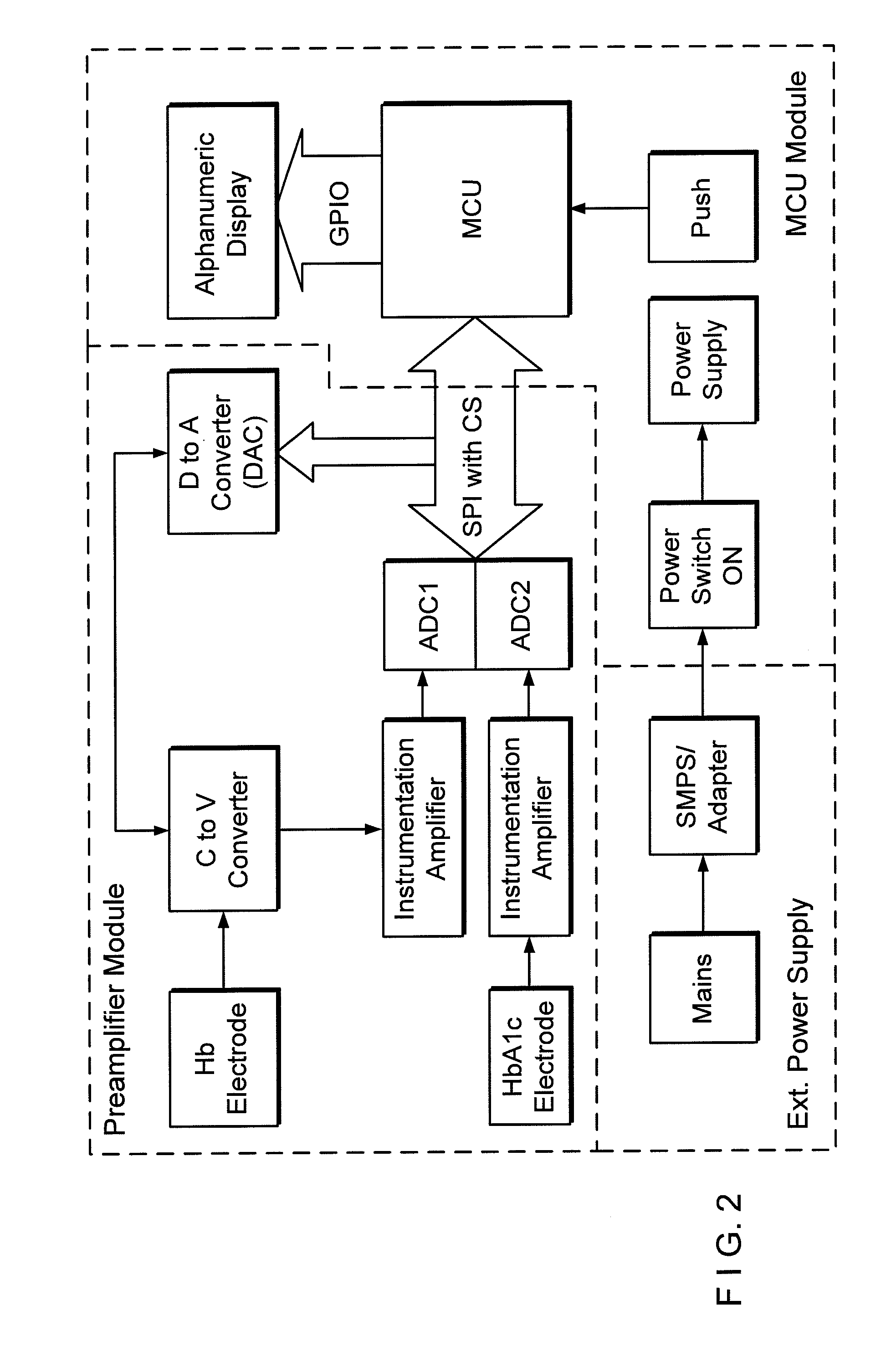Non-enzymatic electrochemical method for simultaneous determination of total hemoglobin and glycated hemoglobin
a non-enzymatic electrochemical and total hemoglobin technology, applied in the field of non-enzymatic electrochemical methods for simultaneous determination of total hemoglobin and glycated hemoglobin, can solve the problems of affecting the shelf life of the system, requiring several manual operations, and requiring a large amount of energy
- Summary
- Abstract
- Description
- Claims
- Application Information
AI Technical Summary
Benefits of technology
Problems solved by technology
Method used
Image
Examples
example 1
[0104]Preparation of Electrodes
[0105]Starting material used for the preparation of electrodes of the screen-printed sensor strip was conductive carbon paste procured from Coates, Inc. (USA). This conductive carbon paste was used as an ink to print on the predetermined areas of the fibre-reinforced epoxy (FRE) substrates using a screen-printing process.
example 2
[0106]Modification of Electrode 4
[0107]As shown in FIG. 3, region 16 of electrode 4 of the SPE strip prepared in Example 1 was modified by dissolving 4-vinylphenyl boronic acid in iso-propyl alcohol (˜10 ml) and blended with the conductive carbon paste in 1:1 ratio (by weight) and was used for screen printing for potentiometric estimation of HbA1c from blood sample.
example 3
[0108]Process for Modification of Electrode 4
[0109]In this process, the screen-printed carbon electrode of Example 1 was modified with a conducting polymer film (thickness: approx.5-10 μm) of amino phenyl boronic acid (PABA). It was electro-deposited on the carbon electrode using the electro-polymerization procedure / conditions, which are briefly described as follows: 3-amino phenyl boronic acid (0.04 M) of quantity 87.0 mg and sodium fluoride (0.2 M) of quantity 105.0 mg were dissolved in 12.5 ml of 0.2 M HCl solution. Polymerization was effected by dipping one of the screen-printed carbon electrodes in the above solution under unstirred conditions and the electrode potential was scanned between 0.0 and 1.1 V until the charge in the cathodic scan reached 10 mC cm−2. A deep bluish-green film was obtained and it was washed with water. The electrode was thus modified and then rinsed with water, followed by PBS solution and it was ready for use.
PUM
| Property | Measurement | Unit |
|---|---|---|
| thickness | aaaaa | aaaaa |
| impedance | aaaaa | aaaaa |
| thickness | aaaaa | aaaaa |
Abstract
Description
Claims
Application Information
 Login to View More
Login to View More - R&D
- Intellectual Property
- Life Sciences
- Materials
- Tech Scout
- Unparalleled Data Quality
- Higher Quality Content
- 60% Fewer Hallucinations
Browse by: Latest US Patents, China's latest patents, Technical Efficacy Thesaurus, Application Domain, Technology Topic, Popular Technical Reports.
© 2025 PatSnap. All rights reserved.Legal|Privacy policy|Modern Slavery Act Transparency Statement|Sitemap|About US| Contact US: help@patsnap.com



